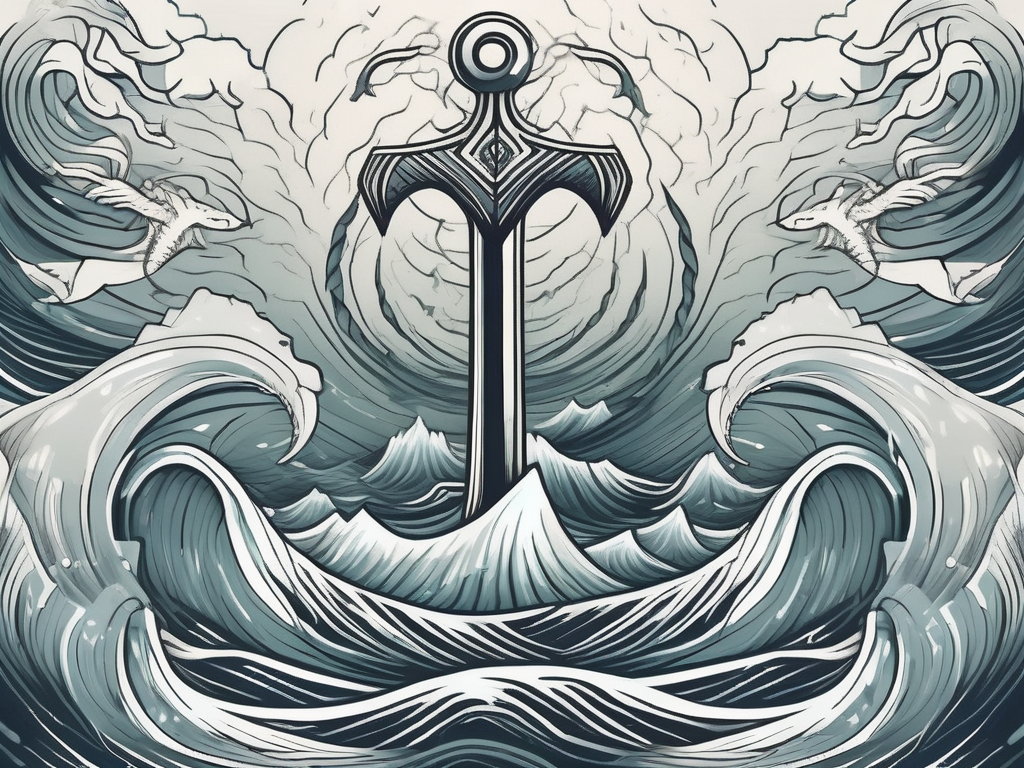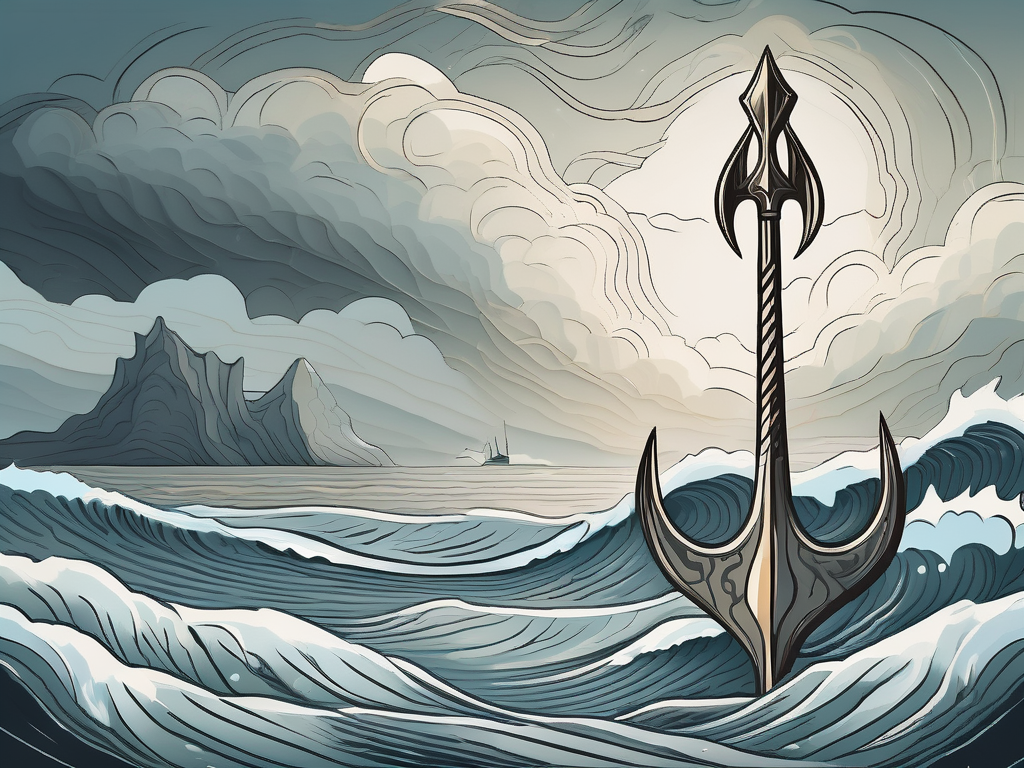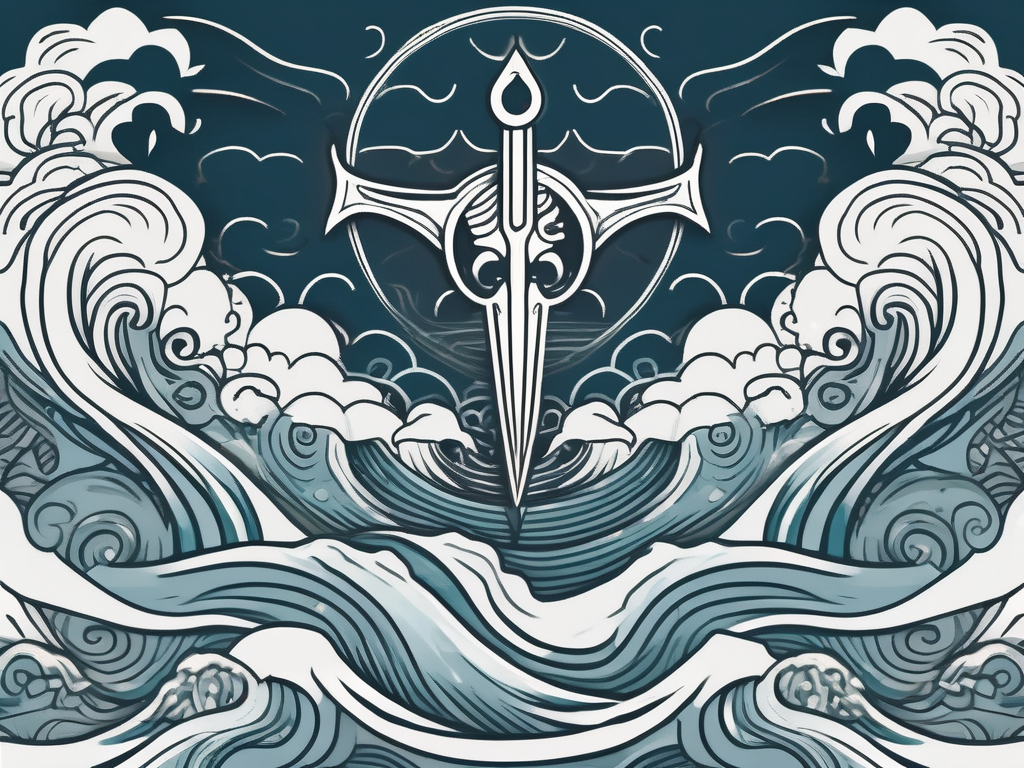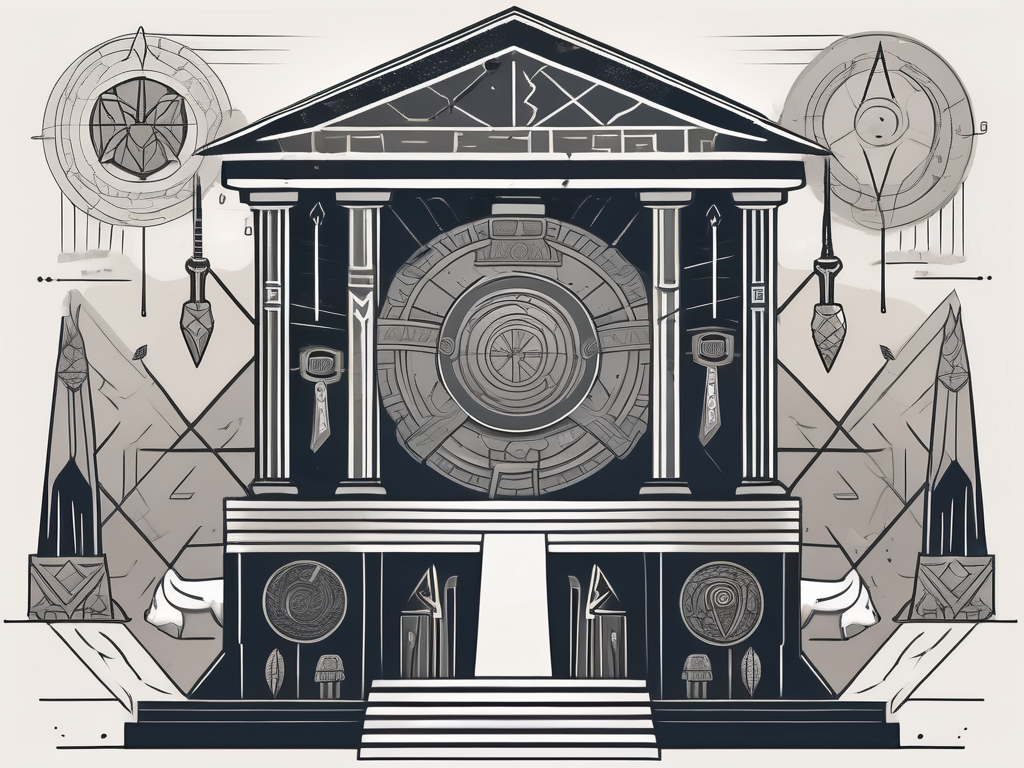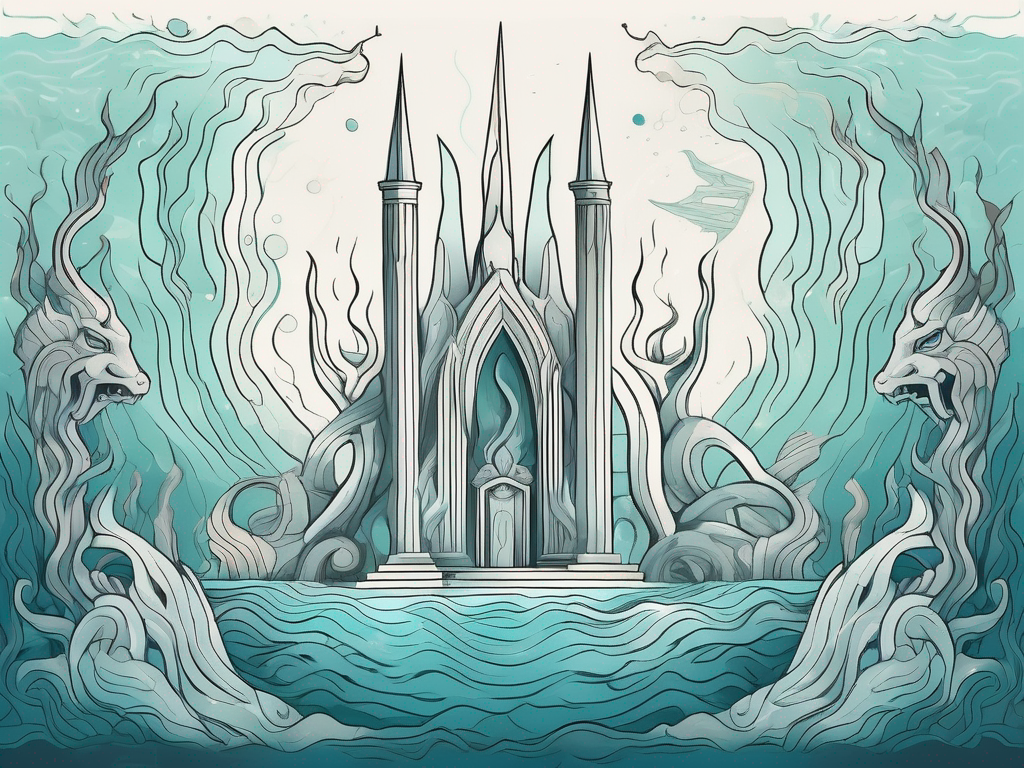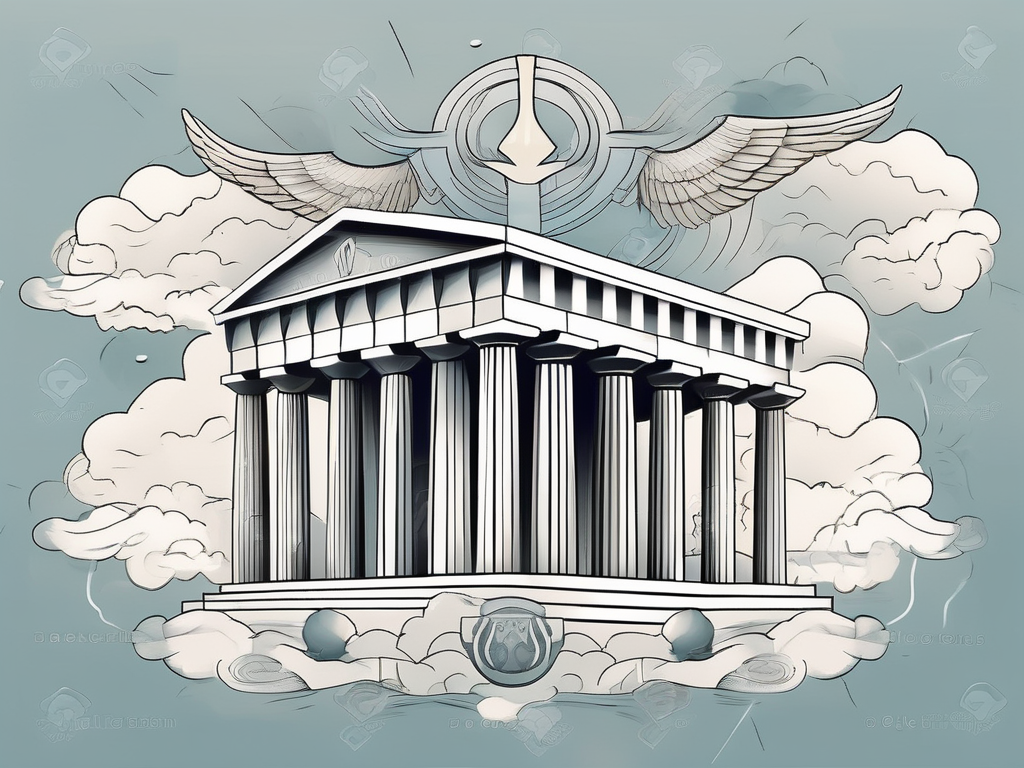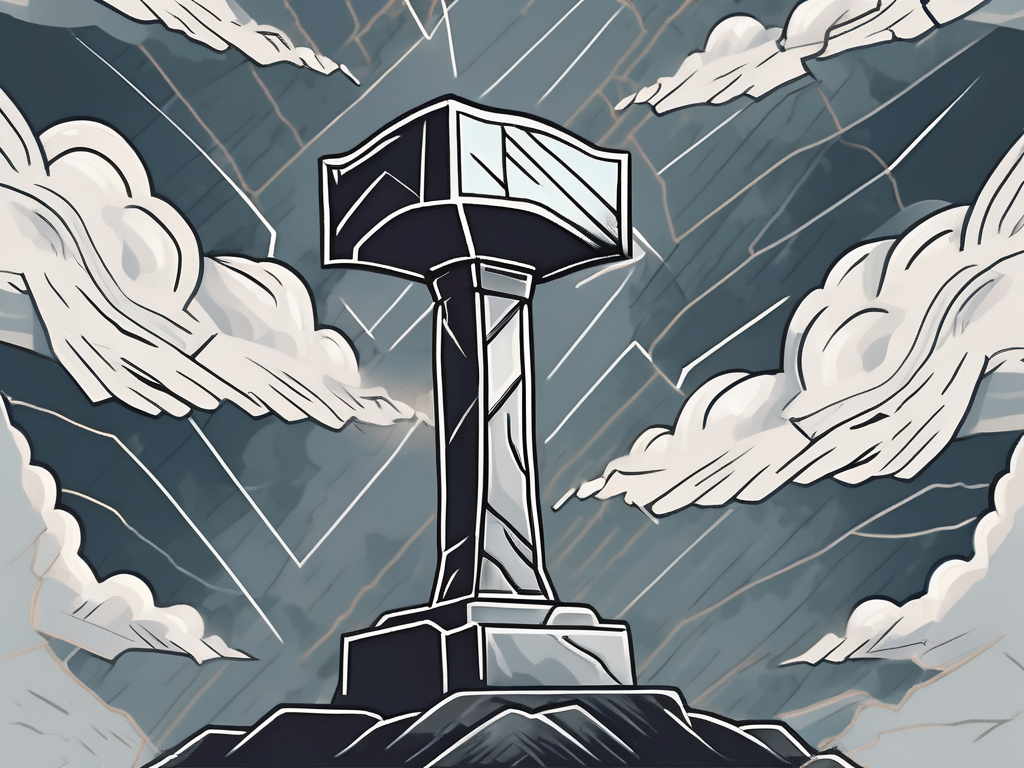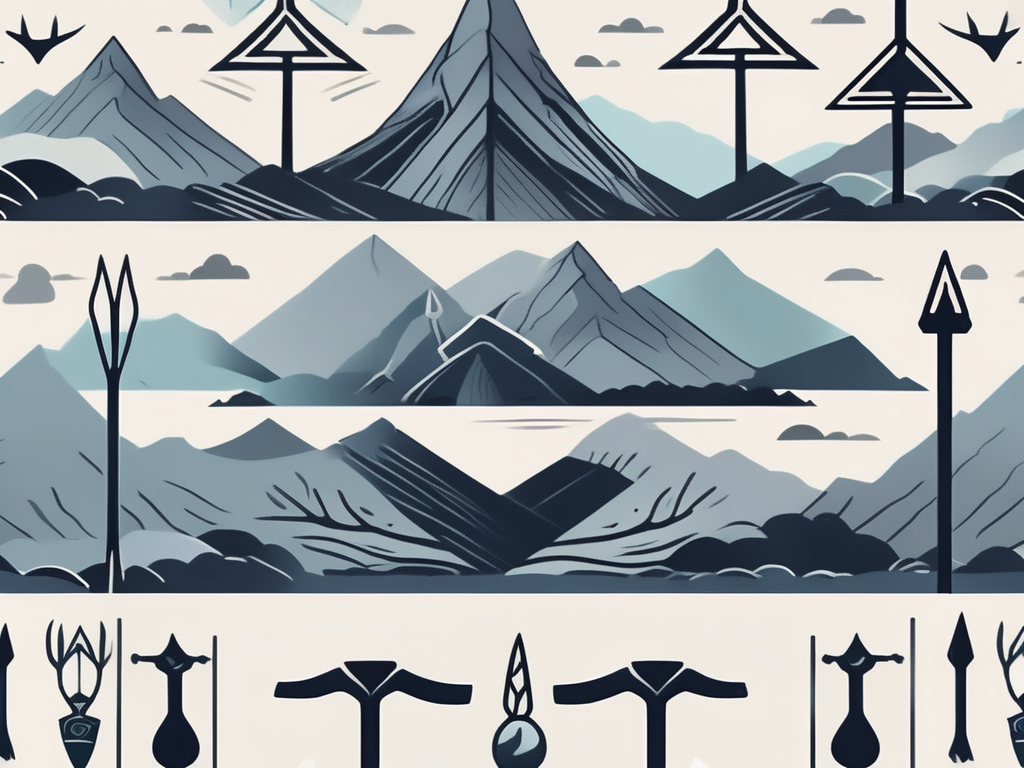In the rich tapestry of Norse mythology, there are many intriguing deities who hold sway over different aspects of the natural world. Among these divine figures, Aegir, the god of the sea, stands out with his enigmatic presence and captivating mythology. Let us delve into the depths of Aegir’s story and discover the fascinating world surrounding this mythical figure.
Understanding Aegir’s Role in Norse Mythology
In Norse mythology, Aegir plays a significant role as the god of the sea. Known for his commanding presence, Aegir is both revered and feared among the Norse gods. With the power to manipulate ocean currents and unleash mighty storms, Aegir holds dominion over the vast expanse of the sea.
Aegir’s temperament is as tempestuous as the waters he commands. In some tales, he is depicted as a gracious host, inviting the gods to grand feasts in his underwater hall. However, in other accounts, he is portrayed as a fearsome deity, embodying the brutal force of the sea.
One such tale tells of a feast hosted by Aegir in his magnificent hall, where the gods gathered to celebrate and revel in their divine powers. The hall, known as Aegir’s Hall, was said to be a sight to behold, with its walls adorned with shimmering corals and its floors paved with pearls. The gods feasted on the finest delicacies, served by Aegir’s attendants, the waves and sea creatures. The atmosphere was filled with laughter and merriment, as the gods indulged in the pleasures of the sea.
Aegir’s Place Among the Norse Gods
While Aegir is not one of the Aesir, the main group of Norse gods, he is considered an esteemed associate. Frequenting the halls of the Aesir, Aegir has earned their respect, although they are well aware of his formidable nature. As the Norse pantheon revolves around a complex web of relationships, Aegir’s connections extend beyond his status as god of the sea.
One of Aegir’s most notable relationships is with his wife, Ran, who is also a powerful figure in Norse mythology. Together, they are said to have nine daughters, known as the wave maidens or the billow maidens. These enchanting beings are believed to be the personifications of the waves, and they assist their father in his duties, ensuring the ebb and flow of the tides.
Aegir’s influence extends beyond the realm of the gods, as he is also revered by sailors and fishermen. They offer prayers and sacrifices to him, seeking his favor and protection on their treacherous voyages. It is believed that Aegir’s wrath can be appeased with offerings of mead, a beverage that holds great significance in Norse mythology.
Aegir’s Sea Kingdom: The Underwater Realm
Beneath the turbulent waves that crash upon the shores, Aegir presides over his underwater kingdom. In this mystical realm, he rules with unrivaled power, surrounded by his loyal attendants, the waves and sea creatures. Aegir’s hall, known as Aegir’s Hall, is said to be a magnificent sight, bedecked with shimmering corals and adorned with treasures from sunken ships.
Legends speak of the wonders that lie within Aegir’s realm. Deep within the ocean’s depths, there are hidden caves and grottos, home to mythical creatures and ancient treasures. It is said that those who venture into these depths may encounter mermaids, sea serpents, and other fantastical beings that inhabit the realm.
Under the sea’s surface, a mysterious world unfolds, teeming with life and secrets waiting to be discovered. Aegir, as the master of this realm, holds the key to unlocking the depths of the ocean’s vast mysteries. His knowledge of the sea is unparalleled, and he is often sought after by those who wish to navigate its treacherous waters.
As the god of the sea, Aegir’s role in Norse mythology is both awe-inspiring and fearsome. His power over the ocean is unmatched, and his presence is felt in every crashing wave and raging storm. Whether depicted as a gracious host or a formidable deity, Aegir remains a captivating figure in the rich tapestry of Norse mythology.
The Symbolism of Aegir in Norse Culture
Beyond his role as a deity, Aegir holds significant symbolism within Norse culture. His presence is intertwined with themes of fear, respect, and the indomitable force of the sea. Let us explore the multifaceted symbolism of Aegir in more detail.
Aegir as a Symbol of Fear and Respect
Given the unpredictable nature of the sea, it is no wonder that Aegir is often regarded with a mix of awe and trepidation. Sailors have long held deep respect for this formidable god and would often seek his favor before setting sail. Aegir’s power to summon treacherous storms and monstrous waves only serves to reinforce the reverence and fear he commands.
Yet, Aegir’s influence goes beyond instilling fear; he also symbolizes the immense power and resilience required to navigate the vast oceans. His ability to control the currents teaches us to approach the sea with caution and humility, acknowledging its supreme authority.
The Influence of Aegir on Norse Maritime Traditions
Aegir’s mythological significance extends to the realm of Norse maritime traditions. Ancient Norse seafarers relied on their understanding of the sea and its unpredictable ways to ensure safe voyages. Paying homage to Aegir, sailors would offer sacrifices and prayers, seeking his benevolence and protection during their perilous journeys.
Even today, his legacy endures in the hearts of those who navigate the sea. Sailors and fishermen continue to honor Aegir’s memory through rituals and superstitions, seeking his blessings for a safe return and abundant catches.
Aegir’s Family and Relationships
Within the realm of Norse mythology, familial ties and relationships serve as important threads in the tapestry of divine beings. Aegir’s connections with his wife and fellow gods shed further light on his character and place in the pantheon.
Aegir’s Wife Ran and Their Nine Daughters
Aegir’s wife, Ran, is a fascinating figure herself. Often depicted as a goddess of the sea, she possesses a relentless hunger for the souls of drowned sailors. Together, Aegir and Ran rule over the depths of the ocean, their domain intertwined beneath the waves.
In addition to Ran, Aegir shares an intriguing family bond with their nine daughters, known as the wave maidens or the billow maidens. These ethereal beings personify the various aspects of the sea, ranging from gentle ripples to raging tidal waves. They travel across the ocean in their silver boats, enchanting sailors with their ethereal beauty.
Aegir’s Relationship with the Other Norse Gods
Aegir’s interactions with the other Norse gods offer a glimpse into the complex web of relationships within the pantheon. Despite his fearsome reputation, Aegir maintains amicable connections with the Aesir, and they frequently partake in lavish feasts within his magnificent underwater hall.
During these grand gatherings, the gods set aside their differences and indulge in merriment, savoring the finest delicacies and wine from Aegir’s vast mead cauldron. These kingly feasts not only serve to strengthen bonds among the gods but also provide respite from the eternal struggle against chaotic forces that threaten to upend the cosmic order.
Aegir’s Depiction in Ancient and Modern Literature
Aegir’s compelling character has inspired numerous tales in both ancient and modern literature. From the ancient Eddas and sagas to contemporary interpretations, his presence lingers within the pages of countless stories.
Aegir in the Eddas and Sagas
The Prose Edda and the poetic Edda are valuable sources of Norse mythology, shedding light on the enigmatic Aegir. Through these ancient texts, we gain insight into his role as a host and the encounters he has with the gods during his lavish feasts. These tales paint a vivid picture of Aegir’s grandeur and the reverence bestowed upon him by the pantheon.
Equally significant are the sagas, which highlight Aegir’s interactions with mortals. These narratives offer glimpses into the mortal realm’s perception of Aegir, portraying him as a deity who holds sway over the destinies of those who dare to challenge the seas.
Modern Interpretations of Aegir
Beyond ancient literature, Aegir’s allure has seeped into modern interpretations of Norse mythology. Writers, artists, and filmmakers continue to explore the depths of his character, adding new layers of complexity to his already captivating mythology.
Contemporary adaptations often delve deep into the poetic symbolism surrounding Aegir, evoking his immense power and captivating presence. Through vivid imagery and engaging storytelling, these works breathe new life into his age-old tale, ensuring that Aegir’s significance remains resonant and timeless.
The Legacy of Aegir in Contemporary Culture
Aegir’s influence extends far beyond the realm of mythology. Today, his legacy continues to shape contemporary culture, leaving its mark on various forms of art and celebration.
Aegir’s Influence on Modern Media and Art
In popular culture, Aegir’s presence can be felt in various forms of media, including books, movies, and artwork. His commanding presence and oceanic domain make him a compelling figure within fantasy and adventure genres. Through heroic tales and visual depictions, Aegir navigates these modern avenues, captivating audiences with his awe-inspiring power and relentless might.
Artists, too, have been captivated by Aegir’s intriguing character. Painters and sculptors attempt to capture the essence of his mythic persona, seeking to convey his oceanic majesty and turbulent nature through their works. Through their creative interpretations, Aegir continues to mesmerize and inspire.
Celebrating Aegir: Festivals and Rituals
Aegir’s influence is not limited to the realms of literature and art alone. Festivals and rituals are held worldwide, celebrating the enigmatic god of the sea. These events pay homage to his mythological significance, drawing people together to reconnect with the primal forces of nature.
During these celebrations, participants honor Aegir through various customs and traditions, such as storytelling, music, and dance. By immersing themselves in the captivating world of Aegir, attendees forge a deeper connection with the ocean and its breathtaking power.
In conclusion, Aegir, the mythical ruler of the sea, captivates our imagination with his powerful presence and captivating mythology. From his enigmatic role among the Norse gods to his symbolization of fear and respect, Aegir continues to leave an indelible mark on Norse culture and beyond. Through ancient texts, modern interpretations, and contemporary celebrations, his legacy lives on, reminding us of the profound connection between humanity and the mighty forces that govern the natural world.
